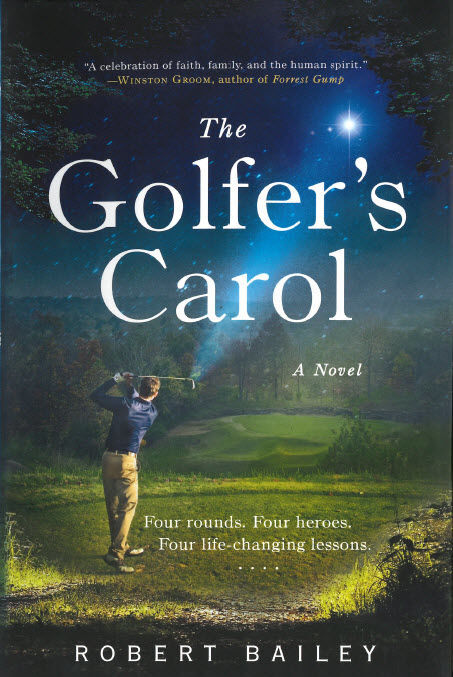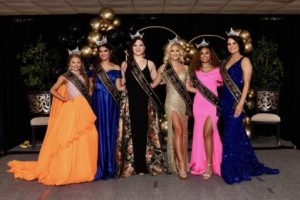Book review: ‘The Golfer’s Carol’
Published 12:00 am Sunday, November 29, 2020

- BOOK REVIEW
“The Golfer’s Carol: A Novel” by Robert Bailey. New York: G.P. Putnam’s Sons, 2020. 226 page, $24 (hardback).
Those searching for an unusual gift for their golfing friends and family should check out this new book, “The Golfer’s Carol.” It is like Charles Dickens’ “A Christmas Carol” but set out on the links.
Trending
The book opens on a depressed note with Randy Clark on his 40th birthday (April 9, 1986, just before the start of a classic Masters Tournament) contemplating suicide by jumping off the Tennessee River Bridge in Decatur, Ala. Randy is a lawyer, but the long struggle to save his young son from leukemia had ended with the boy’s death and the father in deep debt with hospital bills. He felt fortunate to have a large life insurance policy that even paid for suicide, and the only way he could see to provide for his wife and daughter was to end his life. To add to the bleakness, Randy learns on his birthday of the death of his “hero” (or best friend?) Darby Hays, who had been killed in an automobile accident. Darby had been his teammate on the Crimson Tide golf team and had played on the PGA Tour for 19 years before retiring. Randy’s father had drowned his own hopes for a career in golf with the comment that: “There comes a point in every man’s life when he realizes that he’s not going to be Joe Namath.” Randy was troubled that his father, now deceased, was always too judgmental and never proud of him.
Putting all the bad stuff aside, Randy is still planning his exit when he is visited by his dead friend, who suddenly takes him out to a golf course that turns out to be the 13th hole at Augusta. Randy recounts Darby’s career of winning five PGA events, playing the Masters almost 20 times and walking “alongside Jack Nicklaus and Arnold Palmer and Tom Watson.” When he says that Darby “lived his dream” and was his hero, Darby denies it and responds that he was no hero, but a drunk, “a poor husband, and an even worse friend.” Randy is shocked but begins to understand that he didn’t really know Darby as well as he had thought. Darby soon tells him he is going to give Randy “a great and wonderful gift,” which is the opportunity to play a round of golf with his real heroes: “Four heroes. Four rounds. A tournament, so to speak, with the champions you’ve looked up to your whole life.” Darby chuckled when he referred to the gift as “The Randy Clark Invitational.”
After Darby vanishes, Randy is ready for round one and soon finds himself at East Lake Golf Course teamed up with his first hero, Bobby Jones, and his Scottish caddy. Jones teaches Randy a few things about the game and even loans him his famous “Calamity Jane” putter, but as they walk the course Jones relives incidents from Randy’s golfing career, such as the time when he was playing a qualifying round for the PGA Tour. After making four consecutive birdies, Randy hit a snap hook and let another player’s comments get to him and thus blew his chances to join the Tour. Jones even talks about Randy’s intention to commit suicide. Drawing on his own “rock bottom” moment at St. Andrews in 1921 when Jones was so disgusted that he picked up his ball and walked off the course, Jones tells Randy: “Self-control is more than controlling your temper when things go bad. It’s managing your ego and your anxiety when things go good.”
Although Randy is still contemplating suicide after round one, he does take seriously what Jones said about the day he was told that he would never walk again and understanding that no matter how bad the news was the sun still comes up and life goes on. Randy puts off his jump for another day and checks in with his daughter on how Nicklaus is doing in the Masters and also is more considerate of his wife. The next day, he goes to Darby’s funeral and his widow asks Randy if he could empty out Darby’s locker. When doing so Randy reads a diary and finds out what Darby’s life was really like.
There are of course three more rounds of golf to play with Randy’s heroes, but suffice it to say that each of them teaches Randy a lesson of life along with some golf tips. The author explains in his Note that his father’s greatest passion was golf and his hero was Nicklaus. A major shared event was watching the 1986 Masters when Nicklaus charged up the leaderboard in the final round to win the event for his last time. He also relates that he and his brother had played with their Dad the main courses associated with the “heroes.”
“The Golfer’s Carol” is easy reading that brings to life several great golfers and specific holes on some very famous golf courses. The concept of applying “A Christmas Carol” to a golfer’s life may sound hokey, but I suspect that most golfing readers will enjoy the ride. It just might make a better present for the golfer than the standard set of Titleist golf balls.
Trending
– Reviewed by Richard Weigel, History Department, Western Kentucky University







